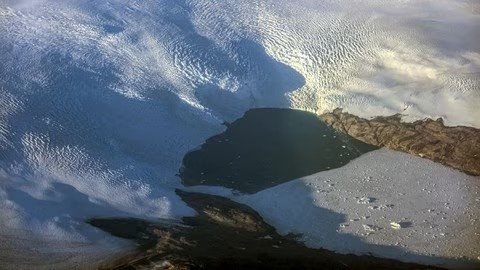Greenland (Terra verde) _ Greenland [ITA-ENG]
ITA
Nel 982 d.C., un colono vichingo proveniente dall'Islanda chiamato Eric il Rosso fu esiliato sull'isola. Mentre esplorava la zona, scoprì che la parte occidentale dell'isola era ricoperta di erba verde. Ispirato da questa vista, Eric chiamò il posto Greenland, che significa "terra verde".
Questa denominazione non è senza scopo. Eric sperava che il nome avrebbe attirato più persone a stabilirsi sull'isola, riducendo al contempo la densità di popolazione dell'Islanda, che all'epoca era nota anche per le sue aree verdi e fertili. A quel tempo, la Groenlandia era il luogo ideale per l'allevamento di pecore e per l'agricoltura, ad esempio per la coltivazione di patate. Ciò dimostra che l'isola era più ospitale per la vita umana rispetto alla fredda impressione che ne abbiamo oggi.
Studi condotti su carote di ghiaccio e gusci di molluschi rivelano che tra l'800 e il 1300 d.C. le temperature nella Groenlandia meridionale erano più calde di quelle odierne. A quel tempo, il nome Groenlandia, che significa "terra verde", aveva perfettamente senso.
Tuttavia, questa situazione cambiò nel XIV secolo. Le temperature estive calarono drasticamente, causando una diminuzione delle rese dei raccolti e un aumento del ghiaccio marino. Queste condizioni trasformarono lentamente la Groenlandia nella regione innevata che è conosciuta oggi.
Inoltre, la ricerca scientifica suggerisce che circa 2,5 milioni di anni fa la Groenlandia potrebbe essere stata completamente verde. Un nuovo studio ha scoperto un'antica terra ricoperta da uno spesso strato di ghiaccio per milioni di anni. Questa terra è ghiacciata sotto uno strato di ghiaccio spesso quasi 3 chilometri. La scoperta fornisce nuove informazioni sui cambiamenti climatici che la regione ha vissuto nel corso della sua storia.
La Groenlandia, pur essendo vasta, pone notevoli sfide geografiche. La maggior parte del territorio è ricoperta di ghiaccio, il che rende limitate le infrastrutture di trasporto. Non ci sono autostrade o reti ferroviarie che collegano una regione all'altra. Le strade sono presenti solo nella periferia della città, mentre gli spostamenti interurbani vengono effettuati tramite altri mezzi di trasporto.
Le barche sono il mezzo di trasporto più utilizzato dai groenlandesi. Per visitare questa regione è possibile utilizzare anche aerei, elicotteri, motoslitte e slitte. Le condizioni geografiche estreme rendono le navi un mezzo di trasporto più diffuso rispetto ad altri.
ENG
In 982 AD, a Viking settler from Iceland named Eric the Red was exiled to the island. While exploring the area, he discovered that the western part of the island was covered with green grass. Inspired by this sight, Eric named the place Greenland, which means "green land".
This naming is not without purpose. Eric hoped that the name would attract more people to settle on the island, while also reducing the population density of Iceland, which at the time was also known for its green and fertile areas. At that time, Greenland was an ideal place for sheep farming and agriculture, such as growing potatoes. This shows that the island was more hospitable to human life than the cold impression we have of it today.
Studies of ice cores and mollusk shells reveal that between 800 and 1300 AD, temperatures in southern Greenland were warmer than they are today. At the time, the name Greenland, meaning "green land," made perfect sense.
However, this changed in the 14th century. Summer temperatures dropped dramatically, causing crop yields to decline and sea ice to increase. These conditions slowly transformed Greenland into the snow-covered region it is known as today.
Furthermore, scientific research suggests that approximately 2.5 million years ago, Greenland may have been completely green. A new study has discovered an ancient land covered by a thick layer of ice for millions of years. This land is frozen under a layer of ice nearly 3 kilometers thick. The discovery provides new insights into the climate changes the region has experienced throughout its history.
Greenland, despite being a large country, presents significant geographical challenges. Most of the land is covered in ice, which limits transportation infrastructure. There are no highways or railways connecting one region to another. Roads exist only on the outskirts of the city, with intercity travel being done by other means of transportation.
Boats are the most popular means of transportation for Greenlanders. Airplanes, helicopters, snowmobiles and sleds can also be used to visit this region. The extreme geographical conditions make ships a more popular means of transportation than others.
